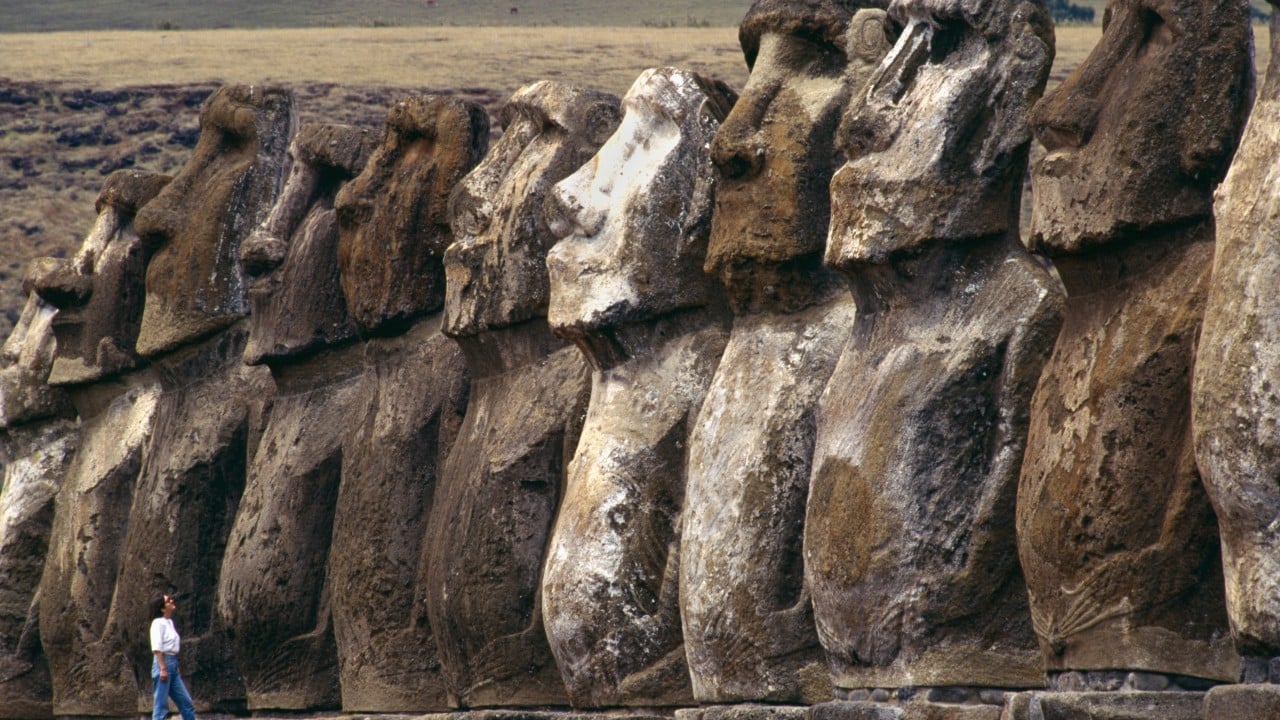I am perched above the kilometre-wide crater of Rano Kau, on the island of Rapa Nui, also known as Easter Island, staring down at a lake thick with green algae. “I have seen crazy things,” he says. It feels a little crazy to have taken a long, expensive trip to see one of the world’s most remote inhabited islands.
Visitors not arriving by cruise ship fly in from Santiago, Chile’s capital city, on Latam Airlines, the only airline currently serving the island. The palm trees and sea breeze outside the airport, which has a thatched roof decorated with bird motifs, make it feels as though you have left Chile for Polynesia – which is where the island’s original settlers came from, sometime between 400AD and 800AD. They developed their culture in isolation until Easter Day, 1721, when Dutch explorer Jacob Roggeveen stumbled upon the small, triangular island.

The airport is in the island’s only town, Hanga Roa, where about 95 per cent of Rapa Nui’s 8,000 inhabitants live. A collection of low buildings, some with thatched roofs, beside a harbour, Hanga Roa is most definitely a tourist town, with lots of tour agencies, restaurants, outfitters and large handicraft and souvenir markets. Elsewhere, at the Holy Cross Church, the Virgin Mary statue wears a crown of birds, the Holy Spirit is represented as a frigate bird rather than a dove, and people sing hymns in the Rapa Nui language.
My four-night stay at the all-inclusive Explora Rapa Nui lodge, 6.5km northeast of Hanga.
















